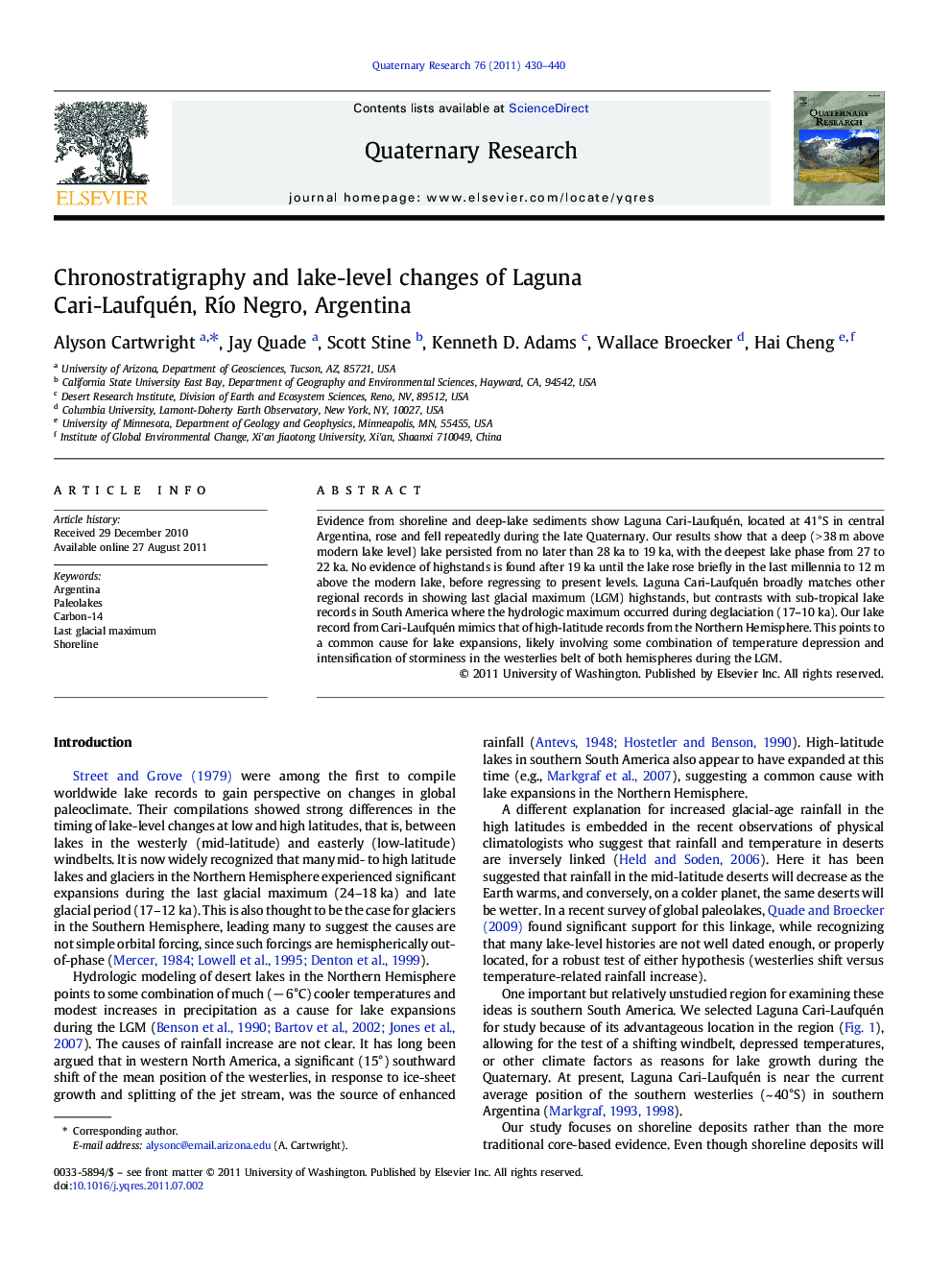| Article ID | Journal | Published Year | Pages | File Type |
|---|---|---|---|---|
| 1045561 | Quaternary Research | 2011 | 11 Pages |
Evidence from shoreline and deep-lake sediments show Laguna Cari-Laufquén, located at 41°S in central Argentina, rose and fell repeatedly during the late Quaternary. Our results show that a deep (> 38 m above modern lake level) lake persisted from no later than 28 ka to 19 ka, with the deepest lake phase from 27 to 22 ka. No evidence of highstands is found after 19 ka until the lake rose briefly in the last millennia to 12 m above the modern lake, before regressing to present levels. Laguna Cari-Laufquén broadly matches other regional records in showing last glacial maximum (LGM) highstands, but contrasts with sub-tropical lake records in South America where the hydrologic maximum occurred during deglaciation (17–10 ka). Our lake record from Cari-Laufquén mimics that of high-latitude records from the Northern Hemisphere. This points to a common cause for lake expansions, likely involving some combination of temperature depression and intensification of storminess in the westerlies belt of both hemispheres during the LGM.
